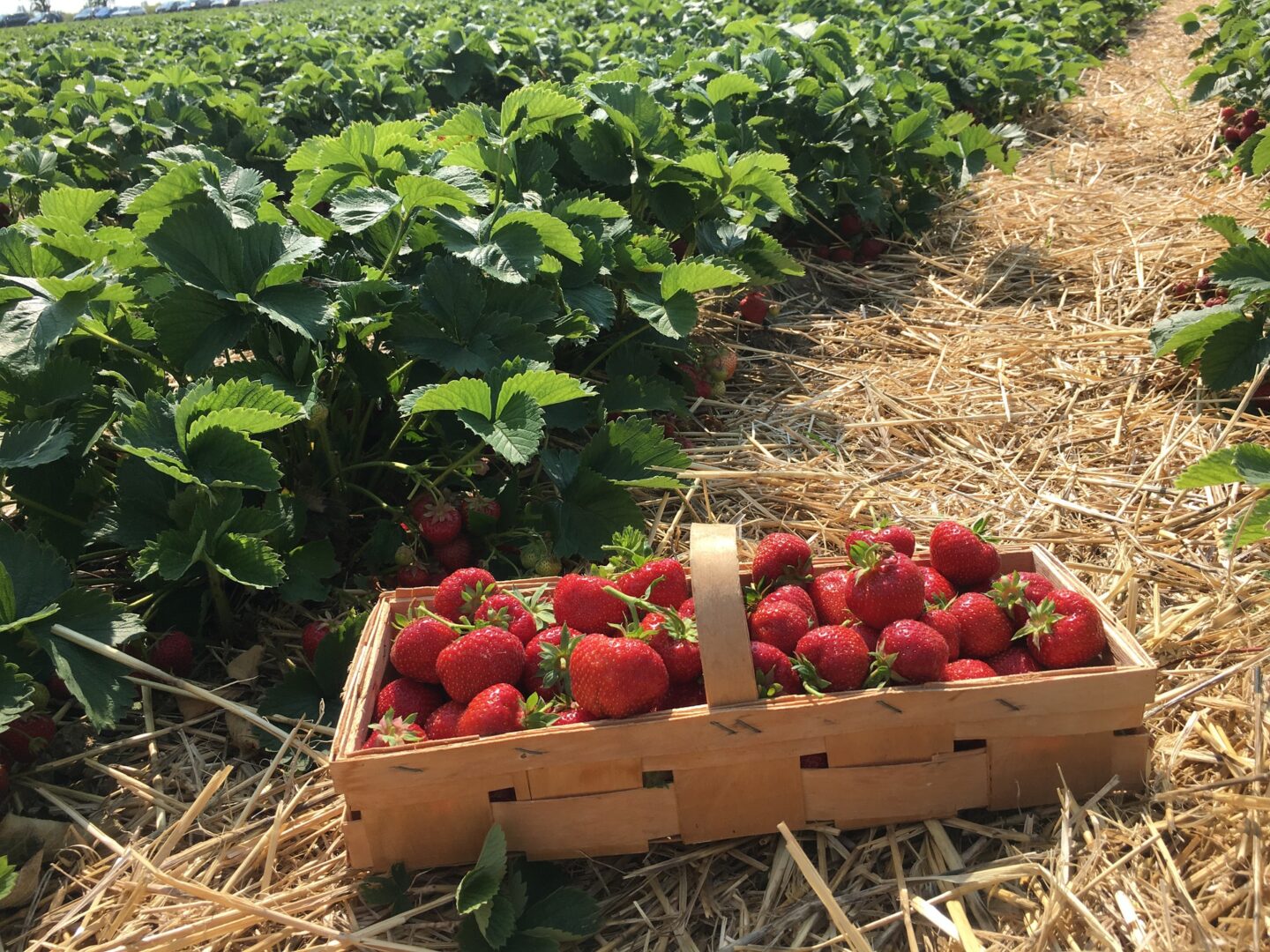Yes, it is Strawberry season—the plants are now available for you to start your own strawberry patch. So how do we do that?
Strawberries are perennials so choose a permanent sunny place where they can stay. Strawberry plants come in little bundles of “crowns”. A crown is the growing point of the plant with roots attached. The foliage and flower buds grow from the crown.
There are both June-bearing and ever-bearing strawberries. June-bearing will produce a larger crop over a period of three to four weeks so are best if you want to make jams or jellies or want to freeze them for later. Ever-bearing plants will produce a smaller crop over a longer period of time so are generally grown for fresh-eating.
Pinch off flowers on June-bearing plants the first year so the plant puts all of its energy into a bigger root system. This will give you a much bigger harvest next year. For ever-bearing plants, pinch off flowers the first flush of blooms so the harvest later that summer will be bigger. Pinch runners off all plants the first year.
How to Prepare Your Plantings
Strawberries prefer compost-enriched soil that is well-draining. Prepare soil to a depth of about 12” and check the pH of the soil. A pH of 6 to 6.5 is best to amend your soil, if necessary. Plant with the crown at the soil surface and gently fan the roots out in the hole.
Because strawberries are shallow-rooted, they do not like to compete with weeds for water and nutrients so mulching the area with straw will help keep weeds down. The straw will also keep the berries off the soil, making it less likely for slugs to damage them. Because of their shallow roots, they do not tolerate drought well and would prefer about one inch of water a week.
To grow strawberries in containers, pick a container with good drainage and fill with a good quality potting soil. I usually work in a generous handful or two of earthworm castings or compost. You may want to tuck a few handfuls of straw around the plants just to keep the berries from sitting on the soil. They’ll dry out a little more quickly than they do in the ground, so check frequently for water.
Strawberries should be fertilized with a complete fertilizer that is a little higher in phosphorus. I have used Garden-tone or even Flower-tone and have had good results. It’s particularly important to feed container-grown plants.
Protecting Your Strawberries From Birds
Yes, birds love strawberries. So do I. So far, I’ve been fairly successful keeping the birds away, by hanging aluminum pie pans around so the glint of the sun shining off of them frightens the birds away. You may also want to invest in row covers. I have a customer who says she’s managed to deter them by making fake strawberries out of strawberry-sized rocks painted red strewn around spots around the yard. I don’t know that I want piles of red rocks around, but if it works…
By the way, remember when picking strawberries, pick them when they are completely ripe as they do not continue to ripen once off the plant. Also, do not wash them until just before you’re ready to use them. One more thing—ENJOY!

